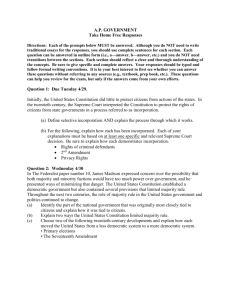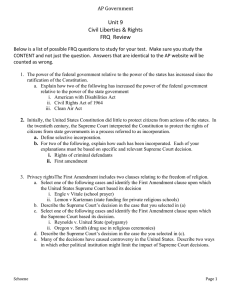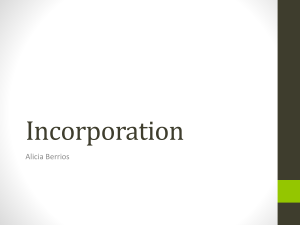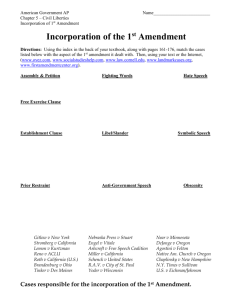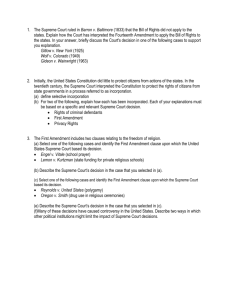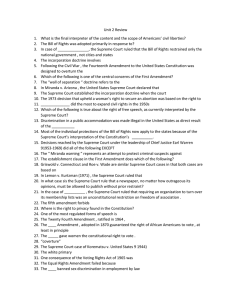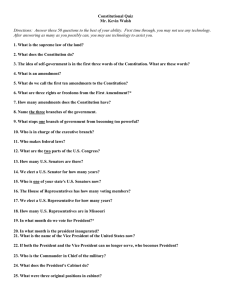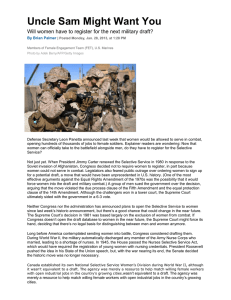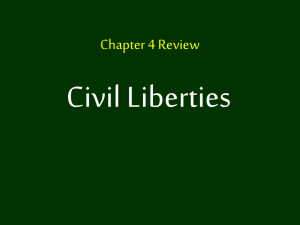2005 Question 3
advertisement
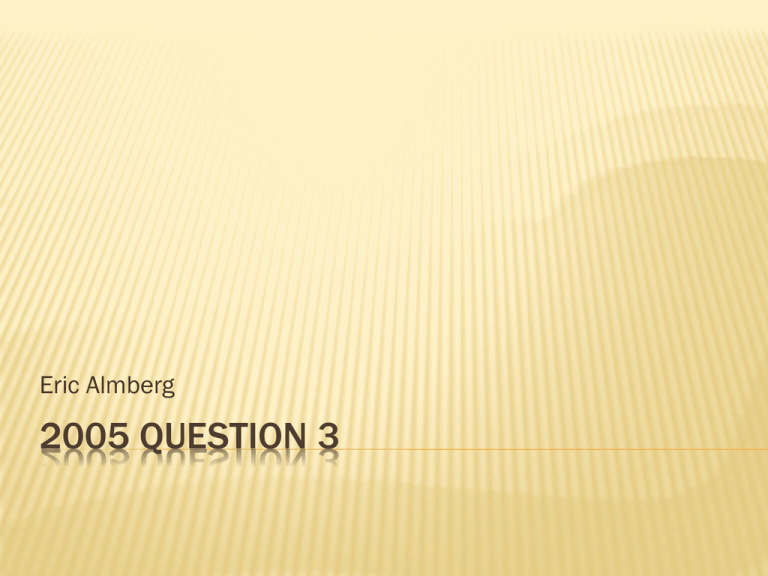
Eric Almberg 2005 QUESTION 3 THE QUESTION Initially, the United States Constitution did little to protect citizens from action of the states. In the twentieth century, the Supreme Court interpreted the Constitution to protect the rights of citizens from state governments in a process referred to as incorporation a. Define selective incorporative b. For two of the following, explain how each has been incorporated. Each of your explanations must be based on a specific and relevant Supreme Court decision Rights of criminal defendants First Amendment Privacy rights DEFINE SELECTIVE INCORPORATION The process by which certain guarantees expressed in the Bill of Rights become applicable to the states through the Fourteenth Amendment. Under the total incorporation approach, an approach never adopted by a majority of the Supreme Court, all the Bill of Rights and the attendant case law interpreting them, are applied to the states. Under the selective incorporation approach, select rights in the Bill of Rights and their related case law are applied to the states. EXPLAIN HOW EACH HAS BEEN INCORPORATED Choose from Rights of criminal defendants First Amendment Privacy rights Use specific and relevant supreme court cases to back up the argument Rights of criminal defendants Most obvious case to use is Miranda v. Arizona (1966) Police Officers in the United States were never required by law to read detainees their rights before interrogation because it was assumed they should know them. Miranda signed a confession never knowing that he could be assigned a lawyer As a result Miranda rights were established in order to allow detainee awareness and fairness FIRST AMENDMENT Many Court cases to choose from Joseph Burstyn, Inc. v. Wilson (1952) Cantwell v. Connecticut (1940) Protection of free speech in films, protecting the right to free speech after attempts were made to restrict film content in the “McCarthy Era” Protected the individual right to practice their religions and enforced the separation of church and state after laws were passed regarding practice of religion. Cohen v. California (1971) The right to free speech was upheld in the strongest of circumstances after the state of California convicted a man of a code which prohibits “maliciously and willfully disturb[ing] the peace or quiet of any neighborhood or person . . . by . . . offensive conduct” and classified wearing a jacket reading “F**k the draft” as offensive conduct. The supreme court upheld his right to speech in this case. The court case must appeal directly to the individual rights defined in the first amendment, and any case in which they were violated by the state Good site: http://www.anarchytv.com/speech/cases.html PRIVACY RIGHTS Again easy major case to chose: Roe v. Wade (1973) Many States restricted the private right to an abortion though no specific mention of it was made in the constitution The case abolished nearly every law in existence that put restrictions on abortions, once again putting the power in the people’s hands Judiciary branch is protection a person’s right to do as they please without the government intervening to a certain extent
